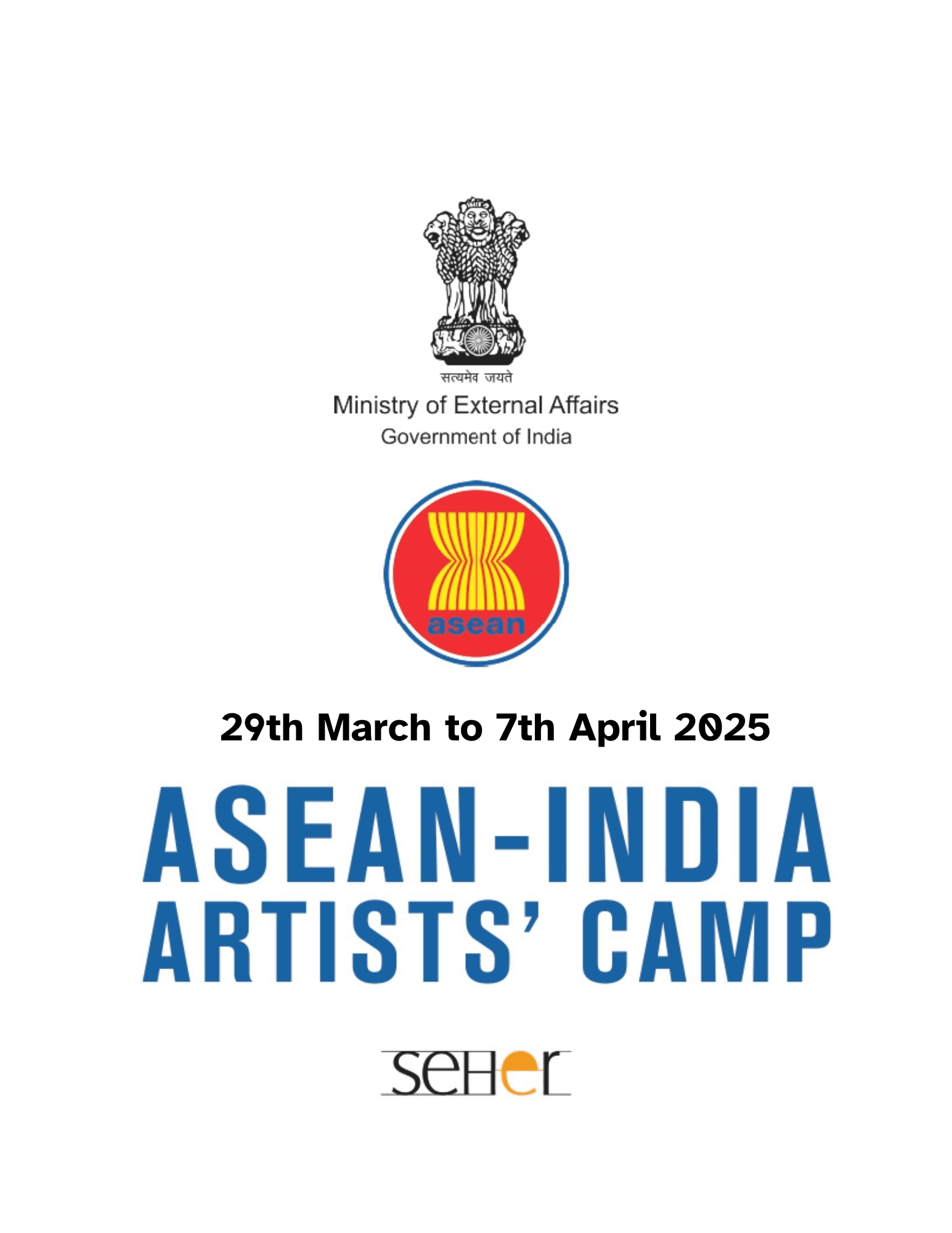Khajuraho Artist Camp
Khajuraho Artist camp was organized in Dec 1999 by Seher to celebrate the 1000 years of the Khajuraho Temples. Painters during this camp captured the beauty of the fascinating temples of Khajuraho on the canvas. The focus was to create works which represented the richness of these temples which are India’s unique gift of love to the world and represent the expression of a highly matured civilization.
| Participating Artists |
| Jogen Choudhary Arpita Singh Prabhakar Kolte Paramjeet Singh Manu Parekh Madhavi Parekh Ranbir Kaleka Kishore Shinde Jaishree Chakravorthy Shalina Vichitra Jatin Das Natraj Sharma Subrata Kundu D . L. N. Reddy Harshavardhana Swaminathan |
| Invitees to the camp to interact with the artists | |
| Ram Rehaman Jyotinder Jain Pavan Varma Ram Rehaman Jyotinder Jain Pavan Varma |
|
Seher Artists Camp
The Concept of Artists camp was pioneered by Seher in the early 90’s for closer interaction, a feeling of bonding and coexistence amongst visual artists who normally work in an enclosed studio environment. The concept was subsequently creatively adapted to be used for creating stronger people to people contact and regional connectivity through art. Since the first camp in the 90s, Seher has gone on to conceptualise and produce many landmark artist’s camps including the ASEAN Artist Camp at Taj Aravali in Udaipur, the Korea India Artist camp 2023 to mark 50 years of Diplomatic relations, Agra – 350 years of Taj Mahal, Mauritius – Promoting the Mauritius Tourism, England – the rich countryside of Britain as seen by Indian painters in collaboration with the British Council and British tourist authority, Khajuraho – 1000 years of Khajuraho temples, Visakhapatnam – Samudra Artist’s Camp to celebrate the 25th International Congress on Irrigation and Drainage (ICID)
The artists camps by Seher are of varying duration and a congregation of creative minds. Artists from different countries and regions of India come together on one platform. The artists all work on individual artworks with an underlining theme of the camp. With abstracts to vivid forms and multi-media to inclusion of unique elements, the artworks are then displayed at the end of the camp. This unique synthesis and synergy brings the artists closer and strengthens the bonds of nations and people.
What makes these initiatives unique is that each camp goes beyond the traditional concept of an art camp by including various forms of visual and performing arts. The camps witness the artists indulge in interactive sessions, various cultural events like Odissi, Kuchipudi and Kathak recital by exponents, youth outreach workshops, yoga, etc.
Youth outreach workshops are an important facet of these artist’s camp as it is here that students get to interact with artists, learn from them and get inspired to tread a path of their own. We believe in nurturing the next generations of artists.
Curator’s note:
“Artist camps harness the power of visual art to bring nations and people together. Artists coming from different regions of India as well as different parts of the world and different backgrounds and ways of thinking still share the same bond of creativity even though they might work in different mediums. Thus, creating a unique environment of joint collaborative community art. We take pride in having organised artist camps for some landmark events like 50 years of India-Korea Diplomatic relations.
For me, the curation process of the artist’s camp happens organically, with the most important criterion being openness to learning. Age doesn’t matter; there’s no distinction between big and small artists. To me, it’s not just about showcasing artworks, it’s about the process. The process is important – it’s about everyone painting on one theme in one environment, drawing inspiration from each other. What’s crucial is how each painting is distinct—a testament to the importance of the creative process. You retain your identity and yet you collaborate.”
 ×
×

